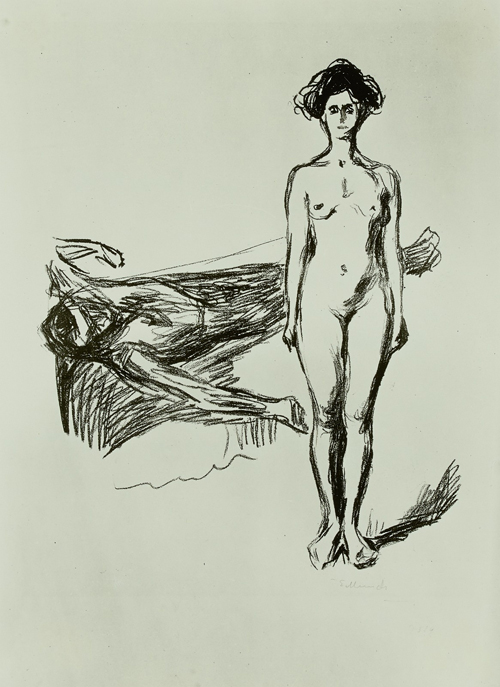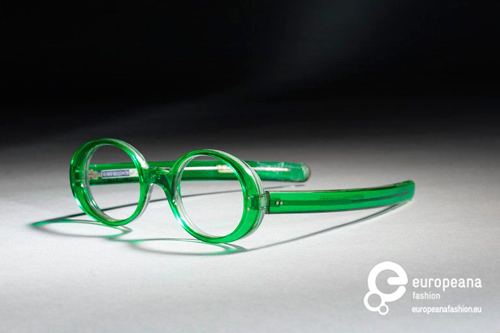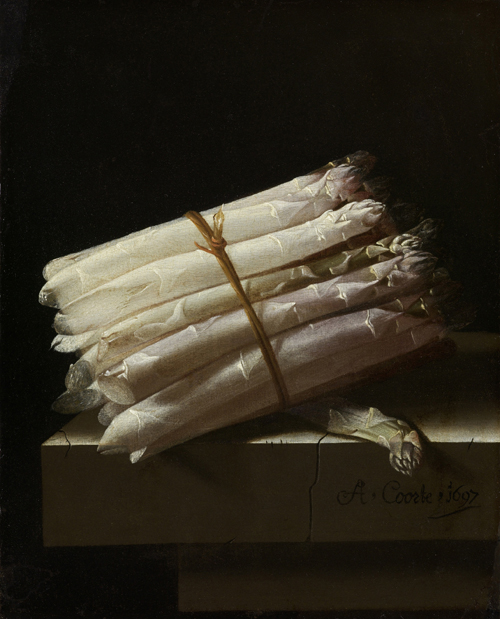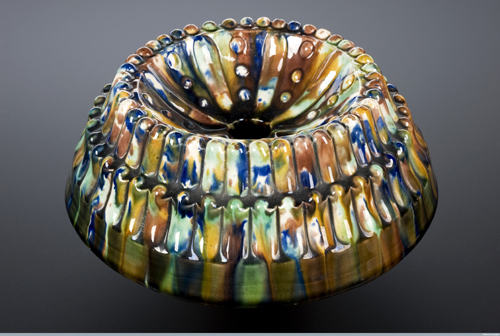Europeana, Munch, Brillen und Spucknäpfe
Die ÔÇ×KulturtussiÔÇ£ Anke von Heyl hat mir ein Blogst├Âckchen zugeworfen, ├╝ber das ich mich sehr gefreut habe. Es geht beim Rumgewerfe, an dem ich mich auch beteiligen werde, darum, die Blogwelt darauf aufmerksam zu machen, dass man sich ÔÇô trotz der vielen ollen Bilderverbote in der Kunstwelt ÔÇô bei der Europeana wild bedienen und mit dem Material gerne seine Blogposts schm├╝cken darf.
Anke hat mir ein Selbstportr├ñt von Edvard Munch geschickt, das mir als Inspiration f├╝r einen Blogeintrag dienen soll. Munch ist mir im Studium nur ein einziges Mal untergekommen, als wir in einer Vorlesung ├╝ber Davids Der Tod des Marat sprachen und davon diverse Variationen gezeigt bekamen. Munch hat sich mehrfach mit diesem Motiv auseinandersetzt (etwas runterscrollen). In der Europeana findet sich eine Zeichnung mit diesem Titel, von der aber nicht klar ist, ob sie eine Vorzeichnung ist. Gelernt: Sie liegt im Kupferstichkabinett in Dresden, wo ich auch mal wieder hinfahren k├Ânnte; die digitale Reproduktion stammt von der Staats- und Universit├ñtsbibliothek in Dresden bzw. der Deutschen Fotothek.

Der Tod des Marat. Munch, Edvard. Deutsche Fotothek. In Copyright.
Bis ich mich getraut habe, das Bild hier im Blog einzubinden, musste ich mich dann aber doch durch ein paar Copyright-Texte, Geb├╝hrenordnungen und CC-Lizenzen lesen, um sicher zu sein, dass ich das Bild auch wirklich verwenden darf. Da hat die Kulturtussi mir ja genau den richtigen K├╝nstler hingeworfen ÔÇô ich schreibe im Einleitungssatz vollmundig von ÔÇ×darf man alles verwendenÔÇ£ und dann kommt bei meiner ersten Suche gleich ein Bild, bei dem sch├Ân links am Rand steht ÔÇ×Nur mit Genehmigung ÔÇô Unterliegt UrheberrechtÔÇ£. Nun gut. Klappt anscheinend doch noch nicht alles so simpel wie wir Nutzer*innen uns das w├╝nschen. Aber wenn ich alles richtig gelesen habe, darf ich das Bild verwenden, also mache ich das.
—
Ein weiteres Mal habe ich ├╝ber Munch nachgedacht, als ich am Museumskatalog schrieb. Insgesamt verfasste ich die Architekturbeschreibungen f├╝r 18 Museumsbauten, die gerade fertiggestellt wurden, sich bereits im Bau befinden oder eventuell nur eine sch├Âne Idee auf dem Rei├ƒbrett bleiben, aber architektonisch ziemlich t├Âfte sind. Eins der Museen ist das Munchmuseet in Oslo, das den alten Bau des bisherigen Munchmuseums abl├Âst. Von diesem Museum hat die Europeana ├╝brigens ├╝ber 3.600 Exponate im Angebot.
So wird das neue Museum 2020 hoffentlich aussehen. Und das schrieb ich im Katalog:
ÔÇ×It was in 1940 that Edvard Munch bequeathed his artwork to the city of Oslo. More than 1,000 paintings, nearly 18,000 prints, close to 8,000 drawings and watercolours, as well as other objects came into the cityÔÇÖs possession after the artistÔÇÖs death in 1944. Since 1963 parts of the collection have been on display in the Munchmuseet. Now the collection is to be moved into a new building that offers modern technical equipment and more display space. For this assignment Estudio Herreros designed a structure that wholly accords with MunchÔÇÖs wishes: it is accessible not only to museum visitors but to the entire city of Oslo.
The elegant structure, its top third tilting forward, towers eleven stories above the harbour. A caf├® on the top floor is also open outside of museum hours, and with its almost completely glazed frontage it offers an expansive view of the city. As the visitor rides the escalators upward behind the glass fa├ºade he can see OsloÔÇÖs history unfolding below: from the harbour, then and now an important trading post, the industrious town extended inland to become a lively metropolis that is the countryÔÇÖs cultural and industrial centre. This new elevated point of view establishes a strong relation between the heritage of the art collection of Edvard Munch and his native city.
The new museum structure based on the ÔÇ£LambdaÔÇØ design by Estudio Herreros deliberately towers above the surrounding buildings and places a new visual accent above the harbour. The projecting upper third gives the otherwise plain fa├ºade an unmistakable, forward-thrusting dynamism. In his landscapes and city scenes Munch himself liked to work with exaggerated perspective so as to direct the viewerÔÇÖs eye to what was essential. [1] Even if the painter was not their primary inspiration, Estudio Herreros has managed to employ this same principle in architecture.
The project was initially received as controversial and strongly discussed by the public, especially because in Norway’s highly egalitarian society it is considered improper for an individual to stand out too much. The architects entered in a dialogue with the city and its inhabitants, taking into consideration criticism of their initial designs and further developing the building until it was approved by the authorities. Now, the MunchmuseetÔÇÖs eleven stories are new to OsloÔÇÖs largely horizontal architecture, and greatly dominate over the cityscape.
Over the bearing structure of concrete and steel a sophisticated, multi-layered curtain wall of glass and perforated metal masks the floorsÔÇÖ irregular openings. In the museum itself light breaks through the glass front and pours into the buildingÔÇÖs interior public areas in contrast to the artificially lit exhibition rooms, while the ground floor is not only illuminated from the side but also from above. The building appears to consist of levels the visitor can enter and experience. The light streaming in through the translucent curtain wall of triple layered glass and perforated aluminum lends the structure a new, almost magical quality [2], making it seem more flexible and fluid.
This flexibility was desired; exhibition rooms are of different sizes and heights. Sculptures and large-format paintings can be appreciated in the larger galleries, prints and drawings in the smaller, more intimate cabinets. Instead of the traditional, somewhat rigid enfilade of rooms through which visitors are forced, here spaces can be set aside or opened, depending on the given exhibition. Around these inner exhibition spaces the museum is a structure that is accessible at no cost, open to Oslo and the world.
[1] Lloyd, Jill. ÔÇ£Van Gogh and Munch: A Question of Style.ÔÇØ In Munch/Van Gogh, edited by Maite van Dijk, Magne Bruteig, and Leo Jansen, 124ÔÇô47. Brussels: Mercatorfonds, 2014, p. 143.
[2] For more information about glass as a building material in modern architecture, please see ├übalos, I├▒aki, and Juan Herreros. Tower and Office. From Modernist Theory to Contemporary Practice. Cambridge, Mass: MIT Press, 2003, p. 99.ÔÇ£
—
Meine drei St├Âckchen werfe ich weiter an die Kaltmamsell, F. und Stepanini. Es besteht nat├╝rlich kein Zwang, es aufzuheben. Ich habe mich bewusst f├╝r Blogger*innen entschieden, die nicht zur ├╝blichen Kunst/Kunsthistoriker-Blase geh├Âren, denn ich glaube, dass die Europeana f├╝r alle interessant ist.
Bei der Kaltmamsell muss ich immer an ihre verschiedenen Brillen denken, die sie auch gerne im Blog herzeigt. In der Europeana fand ich die untenstehende aus den 1960er Jahren sehr schick ÔÇô vielleicht st├Â├ƒt sie ja einen Blogeintrag ├╝ber Mode an? Oder Augen? Oder etwas ganz anderes. Auf der Seite des Victoria and Albert-Museum stehen noch ein paar Informationen zum Objekt.

Milinaire. Victoria and Albert Museum. CC BY.
—
Den ersten Urlaub mit F. verbrachte ich in Amsterdam. Dort spazierten wir nat├╝rlich auch durchs wunderbare Rijksmuseum. Eines meiner Lieblingsbilder dort ist folgendes:

Still Life with AsparagusStilleven met asperges. RM0001.PEOPLE.87191. Rijksmuseum. Public Domain.
Mal sehen, ob F. sich jetzt herausgefordert f├╝hlt, ├╝ber Essen, Museen, Urlaube oder etwas ganz anderes zu schreiben.
—
In Stepaninis inspirierendem Blog mag ich ihre Rezepte immer sehr gerne. Sie veranstaltet auch Supperclubs, und neben dem Essen bewundere ich immer das Geschirr. Deswegen gab ich den Suchbegriff ÔÇ×potteryÔÇ£ bei Europeana ein, und neben lustigen Amphoren, auf denen Fu├ƒamputationen abgebildet waren, kam auch ÔÇô┬ádieser Spucknapf. Der war zu sch├Ân, um daran vorbeizugehen, aber ich wei├ƒ selbst nicht, zu welcher Art Blogeintrag er inspirieren kann. ├£ber Kaugummi vielleicht?

L0058199 Multicoloured spittoon, Europe, 1701-1900
Credit: Science Museum, London. Wellcome Images
Copyrighted work available under Creative Commons Attribution only licence CC BY 4.0
ÔÇ×Spitting was a common and socially acceptable habit in Europe until the 1800s. Pottery spittoons like this one were used as containers for spit and could be found both inside and outside of public places, such as inns and pubic houses. From the late 1800s, spitting was discouraged as it was realised that the habit could spread potentially fatal diseases. These included tuberculosis, or consumption as it was then known, one of the biggest killers of the period. The hole in the side was used to empty the spittoon ÔÇô not a pleasant task.ÔÇ£
—
Moritz Hoffmann wirft ├╝brigens auch mit.